Scott Hamilton – 4 September, 2018
By 2013, when I lived on Tongatapu, the Dateline was more a museum than a hotel. On walks along the waterfront Nuku'alofans would point it out, and remember, with a mixture of pride and wistfulness, the nights when British princesses foxtrotted in the ballroom, or Futa Helu's legendary 'Atenisi University troupe performed the ancient me'etupaki, or paddle dance, for awed palangi academics.
In 1967 Kenneth Bain published The Friendly Islanders, a languorous memoir of his years as a British colonial administrator on loan to the Kingdom of Tonga. In the preface to his book Bain made a prophecy: Tonga was, he claimed, ‘on the brink’ of a ‘great tourism breakthrough’. Fifty-one years later, the Friendly Islands are still waiting for the breakthrough Bain predicted. Tonga attracts about sixty thousand foreign visitors a year; Fiji, by comparison, gets more than three quarters of a million. Even the tiny Cook Islands host about three times as many foreign holidaymakers as Tonga.
Palangi who visit Tongatapu, the kingdom’s largest and most populous island, are often bemused by the absence of features that are taken for granted in more popular destinations. I heard a story about a young woman who was seen wandering about Tongatapu frowning and clutching a map. When a local came to the visitor’s aid, he saw that her map showed the fine reef, blue lagoon, and forested mountains of Rarotonga, rather than the flat, polluted island she had been traversing. The poor palangi had bought a ticket to the wrong Tonga.
Just as a conquering army needs to create a zone of control, and house its forces in barracks, so a tourism industry requires safe havens in every island it colonises, places where the comforts and rituals that visitors expect can be installed and maintained. Visitors to tropical islands may want to forget the working weeks and deadlines and commutes that comprised their lives at home, but they nevertheless expect the cocktails and spare ribs to be served on time at their resorts.
In 1964, near the end of Kenneth Bain’s stay in Tonga, the International Dateline Hotel opened on Vuna Road, Nuku’alofa’s waterfront thoroughfare. The hotel boasted twenty-four guest rooms and suites, a ballroom, a banquet hall, and the kingdom’s first swimming pool. Most of Nuku’alofa’s buildings, including even its royal palace and parliament, were made from wood, but the Dateline, as it quickly became known, was constructed with concrete, glass, and marble.
The hotel’s restaurant and bar became a habitat for Tonga’s royals and nobles, as well as a hunting ground for palangi investors and diplomats. Visiting politicians and monarchs were seated in the ballroom, and entertained by dancers summoned from the bush villages outside Nuku’alofa. News of the hotel’s pool, with its miraculously fresh water, was relayed from kava bowl to kava bowl, until it reached the kingdom’s remotest islands. Parents commemorated the creation of the hotel in the names of their fanau: International, Dateline, and Swimming Pool all turned up on Tongan birth rolls in the years after 1964.
Tongans who won jobs at the hotel found that time as well as space was arranged differently there. Used to the seasonal rhythms set by peasant farmers and subsistence fishermen, they were shocked by long shifts, rigid start times, and palangi managers reluctant to make concessions for the requirements of church festivals and feasts. The force that EP Thompson called, in a famous essay, ‘capitalist work-discipline’ had landed on Tongatapu, and established a beach head on Vuna Road.
For those who desired the Westernisation of Tonga, like Taufa’ahau Tupoulahi, the ambitious oldest son of Kenneth Bain’s employer Queen Salote, the International Dateline Hotel was a salutary institution, an examplar of the capitalist efficiency and discipline that could remake and enrich the Friendly Islands. After Tupoulahi inherited his mother’s crown, he promised to turn Tonga into ‘the Singapore of the Pacific’, a place of industry and prosperity. The young king was no more a prophet than Kenneth Bain.
The Dateline did not remake Tonga; Tonga remade the Dateline. The termites that had long tormented Nuku’alofa’s wooden buildings went to work on the hotel’s furnishings, opening crevices in banquet tables. The kingdom’s lack of plumbers and electricians meant the hotel was prone to floods and blackouts. Workers disappeared and reappeared according to the demands of family and church. Members of Tonga’s feudal elite were reluctant to pay their bar tabs, and the commoners who served them were wary about insisting, having grown up with the terrible word fatonia, which translates as duty, tribute, suffering.
By 2013, when I lived on Tongatapu, the Dateline was more a museum than a hotel. On walks along the waterfront Nuku’alofans would point it out, and remember, with a mixture of pride and wistfulness, the nights when British princesses foxtrotted in the ballroom, or Futa Helu’s legendary ‘Atenisi University troupe performed the ancient me’etupaki, or paddle dance, for awed palangi academics.
In 2013 the doors of the Dateline were usually open, or at least unlocked. A young fakaleiti in an oversized dress often lurked in the lobby, and it was sometimes possible to get her to serve a drink—a whiskey mixed with flat coke, or a warm bottle of Tongan Royal Lager, a beverage that had disappeared from the rest of the kingdom years earlier—though one had to pay in cash, and no change was available.
I enjoyed standing alone in the deep shadows cast by the lobby’s curtained windows, and making out the magnificent mosaic map of Tongatapu that still decorated the hotel’s marble floor. The swimming pool remained a deliciously dark shade of blue, but shards of glass lay on its bottom, where they shone like pearls. I remember walking beyond the pool, and finding a flowering bougainvillea descending from the half-open window of an abandoned suite, like a burglar halfway through his escape.
In 2015 the Tongan government persuaded Tanoa Hotels, a chain owned by the Fijian tycoon YP Reddy, to renovate and reopen the Dateline. Tanoa and the Tongans together spent eighteen million pa’anga, or about twelve million New Zealand dollars, and when the hotel opened last year it boasted one hundred and twenty-two rooms, a twenty-four hour reception, a shop selling kava in tea bags and crosses carved from banyan branches, and a poolside bar and restaurant.
I spent part of July travelling in Tonga’s northern Ha’apai Islands with the sculptor and painter Visesio Siasau, looking at rock carvings and the ruins of temples, and annoying elderly Free Wesleyans with questions about the kingdom’s pre-Christian religion. Sio and I had visited Luahoku, an uninhabited island where his ancestors quarried and carved on beach rock. I liked the idea of staying for a few days at the reopened Dateline, once I returned to Nuku’alofa from the north. In its own way, the hotel promised to be as exotic, as remote from ordinary Tongan life, as any abandoned pagan isle.
I was curious too, about the role of the kingdom’s artists in the revitalisation of the hotel. Tanoa had called in a series of painters to decorate walls and halls and foyers. How, I wondered, had these artists, who were more accustomed to small community galleries than lustrous corporate spaces, dealt with their assignments? Money and art have had a long and acrid relationship, and I hoped that YP Reddy had been a less onerous patron than the Medicis of Florence or certain members of the Auckland bourgeoisie.
Just as a typical coral atoll is spread about, and focused upon, its lagoon, so the Dateline is structured around its swimming pool. The hotel’s three storeys of rooms and suites are arranged in a semi-circle around the pool; the tables at the restaurant and bar face away from Vuna Road, toward the chlorinated, rectangular lagoon. A garden has been planted close to the pool, but not so close that frangipani and hibiscus petals will fall into the purified water. The coconut trees that rise from the garden are eunuchs - their fruit is removed before it can become ripe enough to fall onto the bodies that spread themselves over shaded deckchairs.
The Fresh Bar and Grill that sits at one end of the pool is commanded by palangi, and staffed by young Tongan men and women on twenty-hour shifts. Watching them move silently, almost invisibly from table to stool to deckchair, distributing psychedelic cocktails, coconuts with straws, and plates of ribs, I thought about Judith Huntsman’s claim that the inhabitants of atolls become accustomed to both noting and ignoring each other’s most intimate acts. Walking past a fale without walls, an atoll dweller might hear water dripping from a faucet, or the sounds of lovemaking, but they will, Huntsman says, instinctively avert their eyes from the bodies of their neighbours. The staff at the Dateline seemed to practice the same trick: whether their scantily clad guests were arguing about money, or smooching, or rolling up hundred pa’anga notes, workers kept their eyes on the ground and rictus smiles on their faces.
The Dateline is a place of perfect racial equality and extreme class bias. Most of the hotel’s diners, drinkers, and guests are members of Tonga’s elite - royals, nobles, senior civil servants and clergy, and immigrants to Australasia or America made good, and returned to their homeland to celebrate their success. Tongans wear tuxedos and ball gowns to the restaurant and bar; their children splash about in the pool wearing gold necklaces and gold watches. Red-faced palangi expatriates and Chinese businessmen with casino tans make up the numbers at the hotel.
Visitors to the Dateline are judged by their clothing, rather than their skin colour. When a couple of friends of mine—locals, in their thirties, from a poor suburb beside Fanga’uta, Nuku’alofa’s despoiled lagoon—came to the hotel to meet me, they waited on chairs beside the pool, where their faded T shirts and coral-dusted jandals quickly attracted the attention of staff. My friends were being interrogated by a senior manager—a young American woman, with a loud, guttural voice and the arrogance bestowed by a degree in Business Administration—about their intentions, when I arrived to whisk them to the sanctuary of my room, with its liquor cabinet and its private balcony.
After my encounter with the American, I began meeting friends in the lobby of the hotel, where empty tables congregated around a large screen TV that replayed old rugby games silently. It was in the lobby that I discovered the two whales that Tanya Edwards had painted on a long wall behind a locked minibar.
I began to visit the lobby every morning and evening, even if no friend was waiting for me: it was enough to meet Edwards’ whales. I loved the mixture of formalism and naturalism she had given the creatures. Edwards had rendered their fins and humps and faces in manulua, the pattern of interlocking triangles that is ubiquitous in Tongan barkcloth painting, and can be glimpsed on the broken, three thousand year-old pots of the Lapita people, the first settlers of the Friendly Islands and the ancestors of all Polynesians.
Whereas most barkcloth painters give their manulua dull colours, Edwards had painted them in shades of blue. The delicate transitions in tone made her whales seem to shimmer and slide through the white waters of the lobby wall.
In the morning the light from Vuna Road, and from the harbour on the far side of that road, filtered through the windows and the glass doors of the lobby, and eddied and flowed around Edwards’ blue creatures. In the evening, when the sun had suddenly set, the whales would seem to descend into a darkness that might have belonged to ocean caverns. Occasionally a ute loaded with unsold talo or kumala would fart past down Vuna Road, on its way home from a market, and the whales would be illuminated for a moment or two by a pair of lights. They might have come from a submarine.
On another piece of wall Edwards had painted a series of turtles, in the same style as her whales. I noticed that both sets of creatures were swimming south, away from Vuna Road and the sea, and towards the centre of the hotel complex, where the lagoon-pool waited.
I talked with Edwards in 2016, when she was exhibiting barkcloth paintings of coke bottles and cans of corned beef. If Andy Warhol had enjoyed a residency on Tongatapu, then he might have produced works as aggressively austere. Edwards had explained that, like many contemporary Tongan artists, she was bored by the conventions of barkcloth painting, and contemptuous of the stock images—Norfolk pines, crosses, crowns—that painters are often expected to deploy.
Edwards’ 2016 paintings were skillful and provocative, but joyless. She had retained the muddy colours of most barkcloth art, and the cans and bottles she had depicted reminded viewers of the epidemics of obesity and diabetes that were sending many Tongans to Pulotu.
Edwards’ paintings at the Dateline, though, are both innovative and exuberant. With their sudden irruption into a traditional form, her turtles and whales recall the famous barkcloth in Te Papa gallery that shows a Lockheed fighter plane careening through tropical skies. That painting was made in the 1940s, when an army of American engineers had poured cement over a clearing in the Tongatapu bush, creating a runway that shone in the heat like a dream glacier. For a few years Tongatapu became an aircraft carrier. The island’s artists recorded the strange new birds that crowded their skies.
The whale has undergone a change of function and status in Tonga. When he was researching The Friendly Islanders in the sixties, Kenneth Bain met men who were still making a living by slaying the animals. They had been taught by their fathers to chase whales in small vaka, and to throw harpoons and sticks of dynamites at their sides. Bain’s book includes a photo, taken somewhere in Ha’apai, that shows islanders riding their horses into shallow water, towards a whaling boat that has anchored just off shore. The whalers are busy dismembering their catch; the horsemen will carry away huge hunks of blubber.
Today the children and grandchildren of whale hunters use outboard motors to take palangi tourists close to the creatures. The palangi aim cameras rather than weapons at whales. Tonga’s sea has become an aquarium, and whalers’ old enemy has become the kingdom’s prize exhibit.
On a huge rectangular wall that faces away from the hotel complex, five artists—Charles and Janine Williams, Tanya and Rubi Edwards, and Benjamin Work—have painted a lupe, or Tongan pigeon. Work, who emigrated to Tonga a few months ago, spent years covering Auckland’s walls with bold and ambiguous ideographs, many of which he’d adapted from the carved ‘akau tau, or war clubs, of his ancestral homeland.
A brilliant and disturbing Work mural adorns Fort Lane, a sunless route through a fashionable inner-city Auckland party zone. When coked-up hipsters lurch out of the lane’s clubs at three o’clock on a Saturday morning, they are confronted by Tongan warriors with limbs like lightning bolts, who have assembled against a backdrop that recalls, with its white circle and rectangle of red, the banner of Nazi Germany.
The lupe mural at Dateline in comparison was disappointing. It lacked the daring minimalism that Work brought to Auckland’s walls. The bird was rendered in a dully realistic style, and the branch it sat on resembled a melting Mars bar. I was intrigued, though, by the muralists’ choice of subject. Tongans may be obsessed with rugby today, but for hundreds of years their national sport was pigeon snaring. Royals and chiefs, who were the only Friendly Islanders with the time and energy for games, enjoyed crouching on the summits of pyramidal mounds, and catching passing lupe in racket-shaped nets.
Like the stone tombs of Tonga’s ancient kings, the sia heu lupe, or pigeon hunting mounds, were made by commoners. Scores of mounds give the eye relief on flat Tongatapu, and on the tiny Ha’apai island of Uoleva anthropologist David Burley counted ten of the structures.
While Burley was measuring mounds, Ha’apaians told him stories about the Mata’uvave dynasty, whose scions ruled the northern parts of the archipelago from Uoleva. When the chiefs required labour for a new mound, they would, Burley was told, walk to the island’s beach, turn their backs on the nearby motu of Lifuka, bend over, and lift up their skirts. Bare chiefly buttocks became symbols of indentured labour.
Today the Mata’uvave dynasty has expired, and Uoleva hosts several resorts. Sometimes tipsy palangi holidaymakers skinny dip off the island’s beach, and inadvertently reprise the ancient and contemptuous signal to Lifuka. Tonga’s elite no longer climbs pigeon snaring mounds with nets; instead, they display their status by eating, drinking, and swimming at the Tanoa International Dateline Hotel. Perhaps the bird that Benjamin Work and his friends painted on the hotel is intended as a reminder of the continuity between the old and the new Tonga?
Scott Hamilton
Recent Comments
B W
“It lacked the daring minimalism that Work brought to Auckland’s walls”. Since this was a collaborative mural between 5 different ...
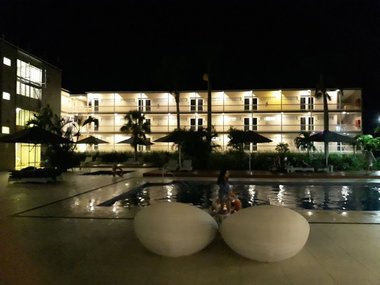


![Tanya Edwards, Untitled Mural [whale], Tanoa International Dateline Hotel](/media/thumbs/uploads/2018_09/1hotelika_jpg_380x125_q85.jpg)
![Tanya Edwards, Untitled Mural [whale fin], Tanoa International Dateline Hotel](/media/thumbs/uploads/2018_09/2hotelikatail_jpg_380x125_q85.jpg)
![Tanya Edwards, Untitled Mural [two whales], Tanoa International Dateline Hotel](/media/thumbs/uploads/2018_09/3hotel2whaes_jpg_380x125_q85.jpg)
![Tanya Edwards, Untitled Mural [turtle], Tanoa International Dateline Hotel](/media/thumbs/uploads/2018_09/4hotelturtle_jpg_380x125_q85.jpg)
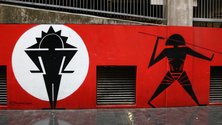
![Tanya Edwards, Rubi Edwards, Benjamin Work, Charles Williams, Janine Williams, Untitled Mutal [lupe], Tanoa International Dateline Hotel](/media/thumbs/uploads/2018_09/6hotellupe_jpg_380x125_q85.jpg)

 Two Rooms presents a program of residencies and projects
Two Rooms presents a program of residencies and projects Advertising in this column
Advertising in this column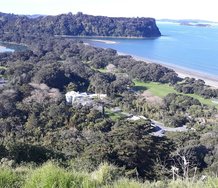
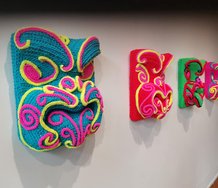

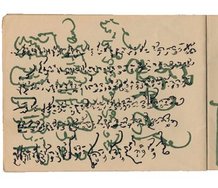
This Discussion has 1 comment.
Comment
B W, 1:06 p.m. 1 October, 2018 #
“It lacked the daring minimalism that Work brought to Auckland’s walls”.
Since this was a collaborative mural between 5 different artists, it was always going to lack one predominant painting style - that’s collaboration.
Talanoa -
https://m.facebook.com/story.php?story_fbid=930045073811327&id=146037565545419
Participate
Register to Participate.
Sign in
Sign in to an existing account.